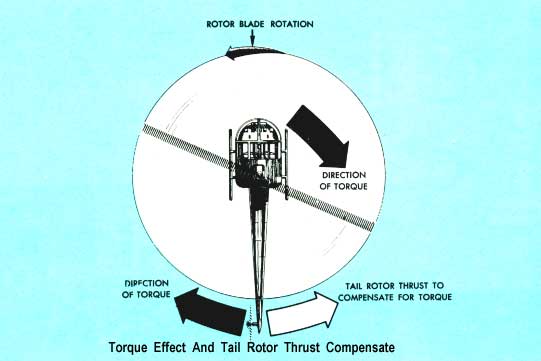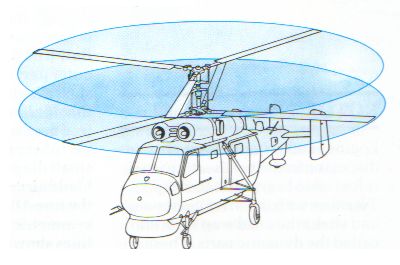Setting Up The Radio
The radio is similar to the aircraft version. The biggest difference will be that the throttle and collective pitch will be mixed together. These two will also mix in yaw or rudder when the throttle is varied.

This is known as anti-torque compensation. What happens is at a hover which is usually 1/2 throttle stick, there is a certain amount of pitch, usually 5 degrees.
At this setting there will be needed a certain amount of tail rotor to correct for the amount of drag induced by the main blades, and the amount of opposite torque that the engine produces. So at this setting the tail rotor will be set to keep the nose straight.
When there is more pitch added to the main blades by increasing the throttle, you get more drag and torque, so you will also need more tail rotor compensation to keep the nose straight.
By taking away the pitch, there will be less drag and torque, so there will be less need for the added tail rotor input. If you have a helicopter with clockwise rotating blades, looking down on the helicopter, you will need right tail rotor from 1/2 throttle to full throttle, and left tail rotor from 1/2 down.
This can be a little confusing because at 1/2 throttle you added to start a certain amount of right throttle and when you decrease the throttle you are really taking out that right tail rotor or going in the left direction.
Next you have extra switches on most helicopter radios for what is know as Idle - Up 1, maybe Idle - Up 2 and engine Hold.
The idle up switches keep the engine at a certain level about 1/2 throttle to full throttle. This is for doing aerobatics. When you come down on the throttle stick, you will get a certain amount of negative pitch for loops, rolls, or even inverted flying.
So since you don't want the engine to quit from being over loaded, the throttle will stay at a percentage to keep the main blades at that set rpm.
For example, let's say that your pitch range was from a minus 5 degrees to a positive 8 degrees, and you hover at a positive 5 degrees.
At this positive 5 degrees the throttle is at a 50% setting.
When you come all the way down on the throttle stick you will a minus 5 degrees. This will in essence let you hover inverted so when you hover you will need that 50% throttle again.
At 0 degrees pitch you will have the least amount of drag induced by the blades and you will need less throttle. So the final throttle curve will look like a "J". The low end will be at 50%, about 1/4 stick will have about 40% throttle, and 1/2 stick will have 50% throttle and full stick will have 100% throttle. The only difference between Idle - Up 1 and 2 will most of the time be the amount of pitch you will have or want at the low throttle stick position, this in turn will also need a different amount of throttle at the low stick position.
The Hold switch will take the engine to an idle position on the throttle and hold it there. By doing this the engine will still stay running but will let you have control of the collective pitch so you can practice your autorotations with the helicopter. The typical pitch settings will be about a minus 4 degrees to a positive 10 degrees.
Both the top end pitch and low end pitch will very during test and set up of the helicopter.
Another two features the radio will most likely have is two knobs that will be called "Hovering Pitch" and "Hovering Throttle". What the hovering pitch knob will do is very the amount of pitch you have at you set hovering stick position, example would be if you hover at 1/2 stick position and at that position you had a positive 5 degrees pitch.
When you vary this knob you might get lets say 4 degrees to 6 degrees of pitch. This will fine tune your helicopter so it will hover at exactly 1/2 stick position. The hovering throttle knob will do the same as the hovering pitch knob but it will do it only to the throttle. It will vary the throttle position or fine tune it at the 1/2 throttle position or where ever you have set that hover position to be. Yes there are some radios that will let you dictate where you want to hover at. Some people will set up for 3-D aerobatics by hovering at 3/4 stick.
This will let them also hover inverted at the 1/4 stick position. By doing this the pitch and throttle curves stay more linear.

























